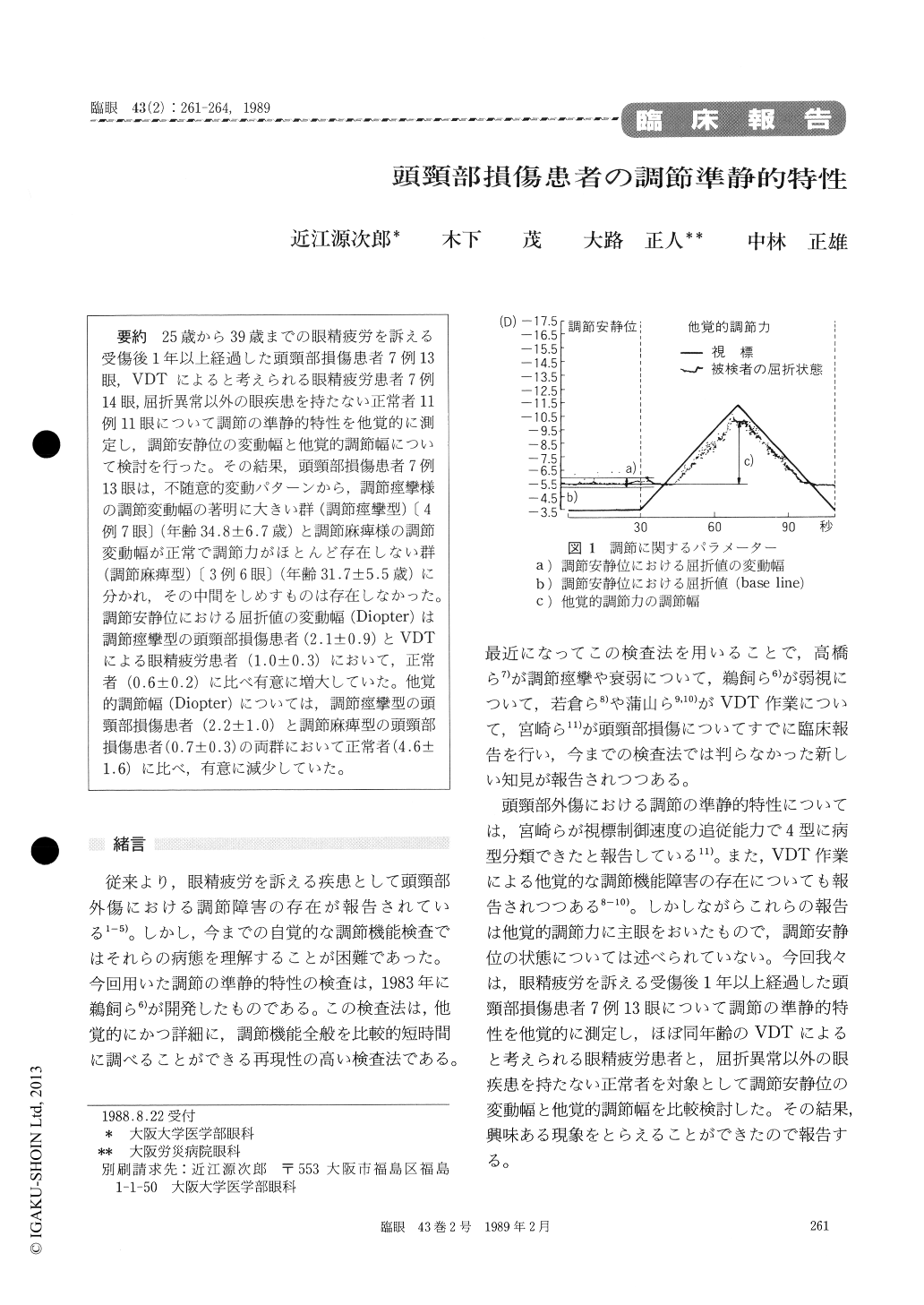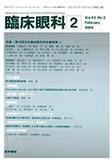Japanese
English
- 有料閲覧
- Abstract 文献概要
- 1ページ目 Look Inside
25歳から39歳までの眼精疲労を訴える受傷後1年以上経過した頭頸部損傷患者7例13眼,VDTによると考えられる眼精疲労患者7例14眼,屈折異常以外の眼疾患を持たない正常者11例11眼について調節の準静的特性を他覚的に測定し,調節安静位の変動幅と他覚的調節幅について検討を行った。その結果,頭頸部損傷患者7例13眼は,不随意的変動パターンから,調節痙攣様の調節変動幅の著明に大きい群(調節痙攣型)〔4例7眼〕(年齢34.8±6.7歳)と調節麻痺様の調節変動幅が正常で調節力がほとんど存在しない群(調節麻痺型)〔3例6眼〕(年齢31.7±5.5歳)に分かれ,その中間をしめすものは存在しなかった。調節安静位における屈折値の変動幅(Diopter)は調節痙攣型の頭頸部損傷患者(2.1±0.9)とVDTによる眼精疲労患者(1.0±0.3)において,正常者(0.6±0.2)に比べ有意に増大していた。他覚的調節幅(Diopter)については,調節痙攣型の頭頸部損傷患者(2.2±1.0)と調節麻痺型の頭頸部損傷患者(0.7±0.3)の両群において正常者(4.6±1.6)に比べ,有意に減少していた。
We evaluated the quasistatic state of accommo-dation in 7 patients who had suffered from head and neck trauma one year or more before. The ages of the patients ranged from 25 to 39 years. As control, we also evaluated 11 normal subjects and 7 patients with visual fatigue due to work with video display terminal (VDT). Infrared optometer was used to determine the state of accommodation.
We could identify 2 heterogenous groups in the 7 patients with a history of head and neck trauma. In one group of 4 patients, accommodative spasm was the predominant feature. In the other group of 3 patients, accommodative paresis was present. In both groups, amplitude of accommodation was of lesser magnitude than in controls.

Copyright © 1989, Igaku-Shoin Ltd. All rights reserved.


